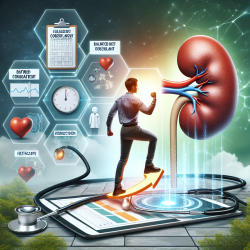Revolutionizing Child Welfare: Insights from the BeST Trial
As practitioners dedicated to improving the lives of children, we are constantly seeking evidence-based methods to enhance our interventions. The BeST Trial, a groundbreaking cluster randomized controlled trial, offers compelling data on the New Orleans Intervention Model (NIM) compared to services as usual (SAU) for infants and young children entering care. This trial not only highlights the clinical effectiveness of NIM but also underscores its cost-effectiveness, providing valuable insights for practitioners in the field of child welfare.
Understanding the BeST Trial
The BeST Trial was designed to address a critical question: How can we best support maltreated infants and young children entering the foster care system? Conducted across multiple sites, this trial involved 390 families and aimed to compare the outcomes of children receiving NIM with those receiving traditional social work services.
The primary focus was on child mental health, with secondary outcomes including quality of life, time to permanent placement, and caregiver-child relationship quality. The trial's findings have significant implications for practitioners, policymakers, and anyone involved in child welfare.
Key Findings: Clinical and Cost-Effectiveness
One of the most striking outcomes of the BeST Trial is the demonstrated effectiveness of NIM in improving child mental health. Children who participated in NIM showed significant improvements in mental health outcomes compared to those receiving SAU. This is a critical finding, as mental health is a cornerstone of overall well-being and development.
Furthermore, the trial revealed that NIM is not only clinically effective but also cost-effective. By reducing the time children spend in temporary care and improving the quality of caregiver-child relationships, NIM offers a financially sustainable model for improving outcomes in the child welfare system.
Implications for Practitioners
For practitioners, the BeST Trial provides a robust evidence base to advocate for the implementation of NIM in child welfare settings. Here are some actionable steps practitioners can take:
- Advocate for NIM Implementation: Use the data from the BeST Trial to support the adoption of NIM in your practice or organization. Highlight the dual benefits of improved child outcomes and cost savings.
- Collaborate with Multidisciplinary Teams: NIM's success is partly due to its multidisciplinary approach. Engage with professionals from various fields to create a holistic intervention strategy.
- Focus on Early Intervention: The trial underscores the importance of early intervention in achieving positive outcomes. Prioritize early assessment and intervention for children entering care.
- Engage in Continuous Learning: Stay informed about the latest research and developments in child welfare to continually refine your practice.
Encouraging Further Research
While the BeST Trial provides valuable insights, it also opens the door for further research. Practitioners are encouraged to explore additional studies that can build on these findings and contribute to a deeper understanding of effective interventions for children in care.
By engaging in research and contributing to the evidence base, practitioners can play a pivotal role in shaping the future of child welfare and ensuring that every child has the opportunity to thrive.
To read the original research paper, please follow this link: The Best Services Trial (BeST?): a cluster randomised controlled trial comparing the clinical and cost-effectiveness of New Orleans Intervention Model with services as usual (SAU) for infants and young children entering care.










